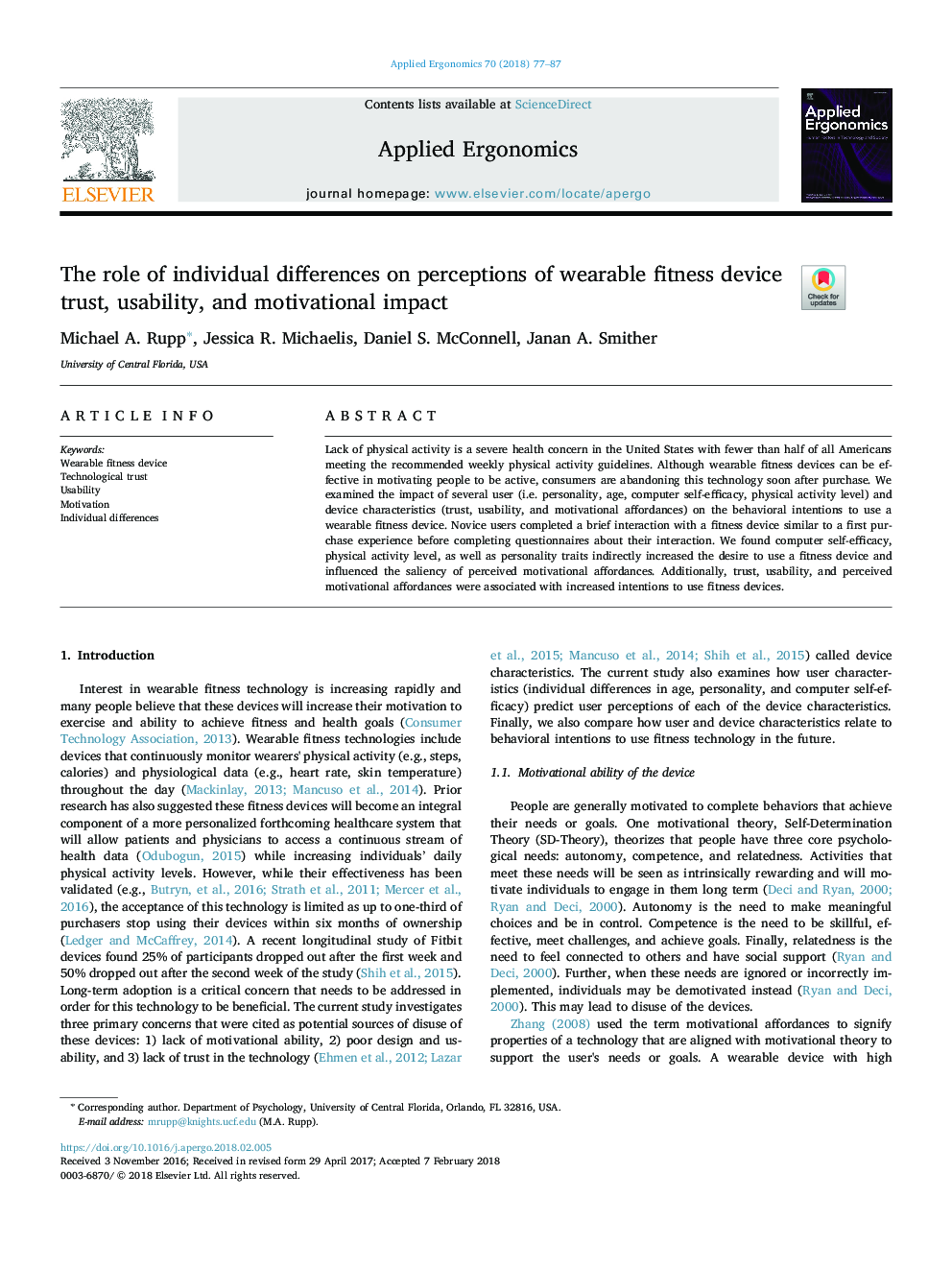| Article ID | Journal | Published Year | Pages | File Type |
|---|---|---|---|---|
| 6947597 | Applied Ergonomics | 2018 | 11 Pages |
Abstract
Lack of physical activity is a severe health concern in the United States with fewer than half of all Americans meeting the recommended weekly physical activity guidelines. Although wearable fitness devices can be effective in motivating people to be active, consumers are abandoning this technology soon after purchase. We examined the impact of several user (i.e. personality, age, computer self-efficacy, physical activity level) and device characteristics (trust, usability, and motivational affordances) on the behavioral intentions to use a wearable fitness device. Novice users completed a brief interaction with a fitness device similar to a first purchase experience before completing questionnaires about their interaction. We found computer self-efficacy, physical activity level, as well as personality traits indirectly increased the desire to use a fitness device and influenced the saliency of perceived motivational affordances. Additionally, trust, usability, and perceived motivational affordances were associated with increased intentions to use fitness devices.
Related Topics
Physical Sciences and Engineering
Computer Science
Human-Computer Interaction
Authors
Michael A. Rupp, Jessica R. Michaelis, Daniel S. McConnell, Janan A. Smither,
